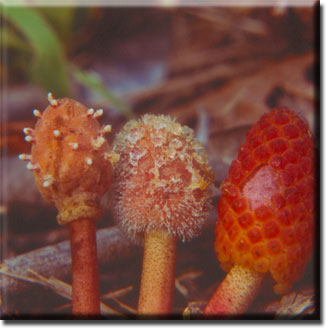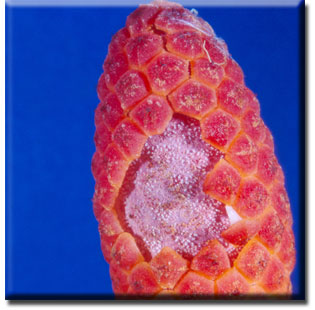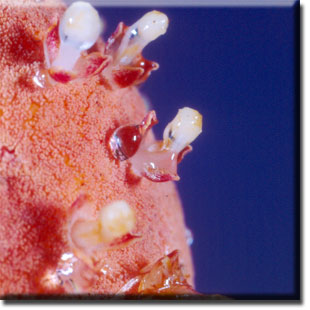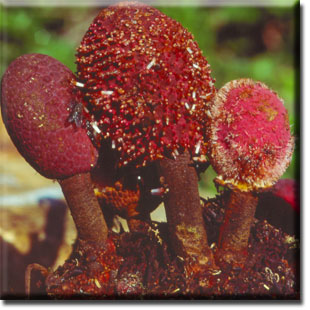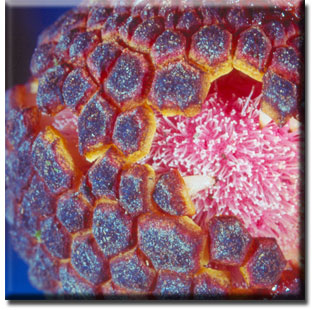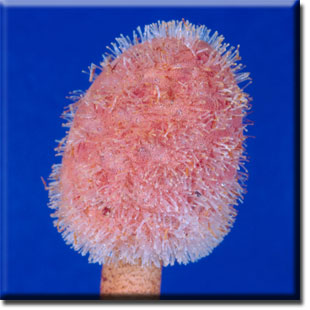HelosisHelosis may look like a fungus, but it's a flowering plant with very tiny flowers. It grows as a parasite on the roots of trees, forming a mound of tissue from which emerge flower stalks (inflorescences). Helosis is native to tropical America, but the family to which it belongs, Balanophoraceae, occurs in tropical areas around the globe. Here are three flowering stalks of Helosis. The one at the right is covered with polygonal scales that fall off. The one at left shows an inflorescence bearing male flowers, which are white and well separated from each other the inflorescence in the middle shows the dense covering of extremely tiny white female flowers. The orange-colored polygonal scales of the inflorescence of this Helosis (found near Iquitos, Peru) are beginning to fall off. Revealed underneath are tiny white dots--female flowers. They are among the smallest flowers, if not the smallest flowers, of any flowering plant in the world. Here are the male flowers of the Helosis from Iquitos, Peru. Each flower has three petals (or what appear to be petals) surrounding a group of three united stamens. Filling the male flowers are droplets of sweet liquid. Flies are attracted to these drops. In the process of feeding on the liquid, the flies pick up pollen grains, which they transfer to female flowers. A Helosis (Balanophoraceae) from Costa Rica. Here are three flowering stalks (inflorencescences) of this species. The one at left is young, covered with polygonal structures that will fall off to reveal the flowers. The large inflorescence in the middle is covered with male flowers, some of which (white) are falling off. The inflorescence at right is covered with female flowers, which are much smaller than the male flowers. If you look closely, you will see a fly visiting the inflorescence in the middle, feeding on the sweet shiny droplets that occur on the male flowers. Inflorescences of the Costa Rican Helosis. From right to left: an inflorescence still covered by polygonal scales; an inflorescence in which male flowers are beginning to emerge; and an inflorescence from which some scales have fallen, revealing a covering of female flowers. The top of the plant body from which the flowering stalks have emerged is at lower left; it connects with the root of a tree (not shown). The surface of an inflorescence of a Costa Rican Helosis, showing male flowers among the polygonal scales that have shrunken away from each other. The male flowers are reddish and bear white-tipped stamens. A male flower pulled away and shown on its side is at upper right: two petals diverge, and the stamens are in its center. The purplish-black scales are falling from the inflorescence of this Costa Rican Helosis, revealing the numerous female flowers underneath. The tips of the female flowers are white. Hundreds of female flowers cover this flowering stalk of a Costa Rican Helosis. Although no moisture is shown here, droplets of liquid are often found on female Helosis flowers, attracting flies, which also visit the male flowers in search of a similar liquid. |
